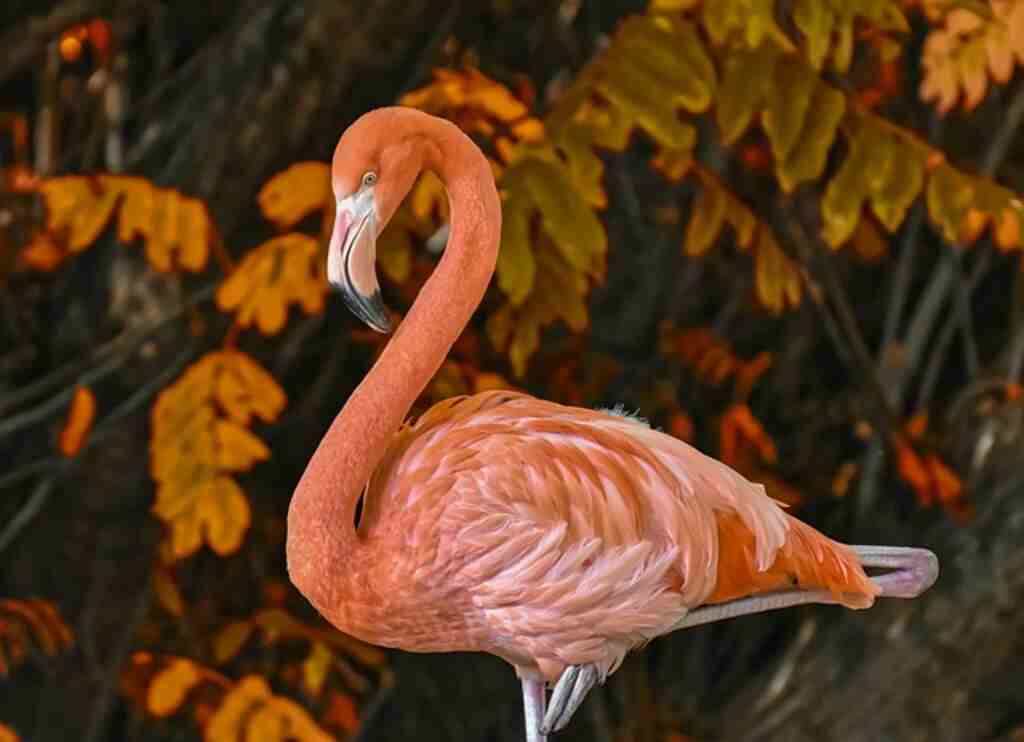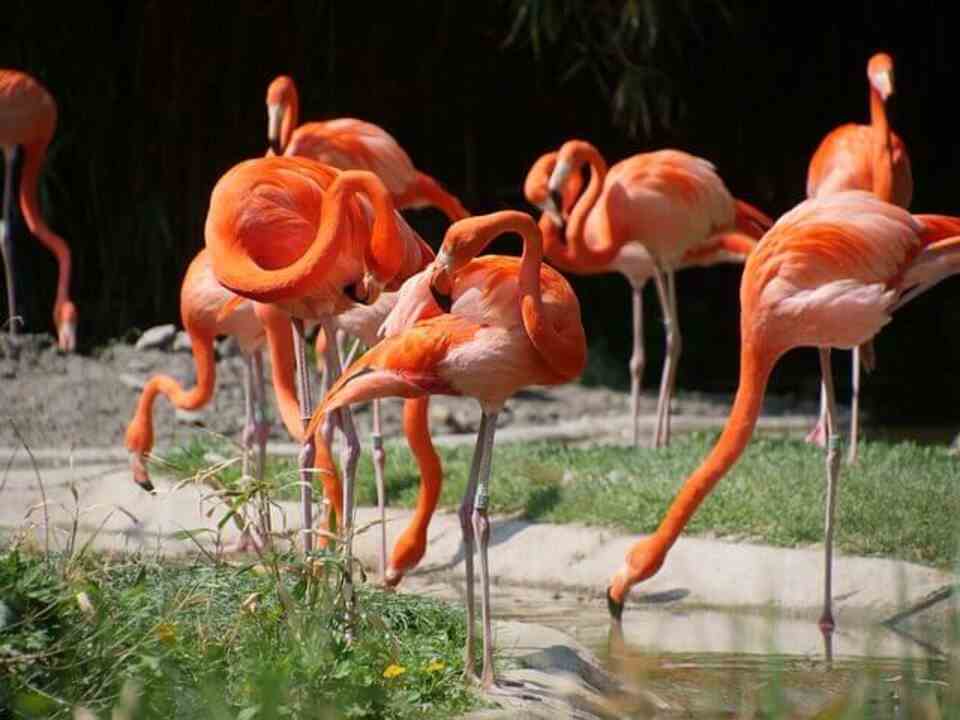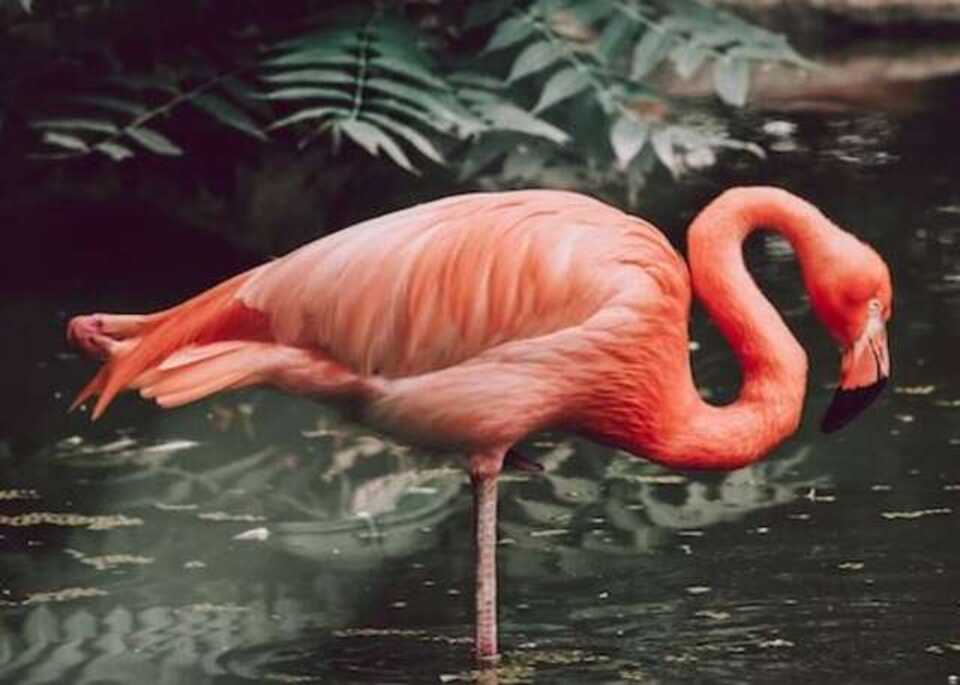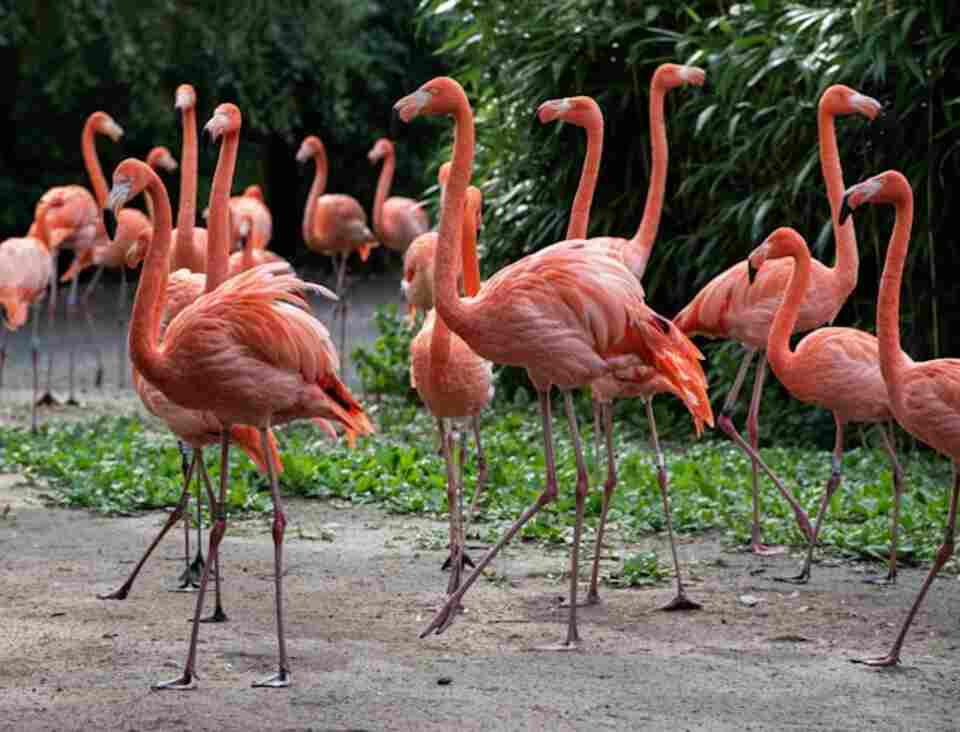Have you ever wondered, why are flamingos pink? The answer lies in their diet. Flamingos get their iconic pink color from the carotenoid pigments found in the algae and crustaceans they eat. These pigments are processed in their digestive system and stored in their feathers, giving them their vibrant hue. In this article, we’ll explore how diet and biology come together to create the stunning color of flamingos.
Table of Contents
🔥 Key Takeaways:
✅ Flamingos are pink due to carotenoids (natural pigments) in their diet.
✅ The brighter the pink, the healthier the flamingo.
✅ Their color plays a vital role in attracting mates and protecting chicks.
✅ Without access to carotenoid-rich food, flamingos turn pale or white.
Why Are Flamingos Pink?
Carotenoids: The Secret Pigment Behind Flamingo Coloration
Flamingos are not born pink. In fact, they hatch with dull gray or white feathers, a far cry from the vibrant pink hues we associate with them. The transformation into their iconic color is a direct result of their diet, which is rich in carotenoids.
Carotenoids are natural pigments found in certain plants, algae, and crustaceans. These pigments are responsible for the bright colors we see in foods like carrots (orange), sweet potatoes (yellow), and tomatoes (red).
For flamingos, carotenoids are consumed through their primary food sources—algae and small crustaceans such as brine shrimp. Once ingested, these pigments are broken down by enzymes in the flamingo’s liver and absorbed into fats that are later deposited into their feathers, skin, and even their beaks.
🌸 The Science of Flamingo Coloration
Flamingos feed on algae, shrimp, and tiny crustaceans rich in carotenoids — the same pigment that makes carrots orange and salmon pink.
When flamingos digest these pigments, their liver breaks them down and deposits them into their skin and feathers. The more carotenoids they consume, the deeper their pink color becomes.
In fact, flamingos in the Caribbean are brighter pink than those in Africa, simply because their diet is richer in these pigments.
The result? A stunning pink hue that captivates birdwatchers and nature enthusiasts alike. Without carotenoid-rich foods, flamingos would remain dull and gray—a testament to how diet directly influences their appearance.
How Flamingos Process Carotenoids Differently
What makes flamingos unique is their exceptional ability to metabolize carotenoids efficiently. Unlike many other animals, flamingos can absorb these pigments at high levels without negative effects on their health. This adaptation allows them to maintain their vibrant coloration year-round as long as they have access to carotenoid-rich food sources.
Interestingly, the intensity of a flamingo’s color can vary depending on how much carotenoid-rich food they consume. In the wild, this means that some flamingos appear paler during seasons when food is scarce or environmental conditions change.
Table: Flamingo Coloration at a Glance
| Factor | Impact on Coloration |
|---|---|
| Diet (carotenoid intake) | Directly determines pink intensity |
| Habitat | Availability of algae and crustaceans |
| Health | Poor health can lead to faded coloration |
| Age | Younger flamingos take time to develop pink |
Flamingo Feeding Habits & Color
Filter Feeding: A Technique for Consuming Carotenoids
Flamingos have evolved a fascinating feeding method that allows them to extract carotenoid-rich food from their environment efficiently. They are filter feeders, much like whales or certain species of fish, but with an unusual twist—they feed upside down!
🧐 Proof from Science: Feeding Habits and Coloration
A 2016 study published in the journal Zoo Biology examined plumage coloration and social partner choice in greater flamingos. The study found that redder males were more likely to have primary social partners compared to less red males, and that social partners tended to have similar color scores. This supports the idea that brighter colors in flamingos play a significant role in mate selection.
The connection between dietary carotenoids and plumage coloration in birds is well-established. Flamingos obtain their pink coloration from carotenoids in their diet, which are found in algae and small crustaceans like brine shrimp.
Additionally, greater flamingos use “cosmetic coloration” by spreading uropygial secretions, which are pigmented with carotenoids, over their feathers. This practice helps enhance their color, making them appear redder. A 2021 study observed that adult flamingos use this behavior less frequently after chick hatching, suggesting that it plays a role in breeding but not exclusively during the mating season.
What Happens When Food Sources Are Limited?
In times when carotenoid-rich food sources become scarce—due to environmental changes or habitat destruction—flamingos may lose some of their vibrant coloring. Their feathers can fade to pale pink or even white if they aren’t consuming enough pigments to sustain their coloration. This makes diet not just a matter of beauty but also an indicator of ecosystem health.
🍤 What Happens If a Flamingo Eats the Wrong Diet?
In captivity, zoos often feed flamingos carotenoid supplements to keep their feathers pink. Without these pigments, flamingos turn pale or even white.
Why Some Flamingos Are Pinker Than Others
Dietary Differences Across Flamingo Species
Not all flamingos have the same shade of pink; some are pale, while others boast deep reddish hues. This variation is largely influenced by differences in diet among flamingo species and populations living in different regions. For example:
- Greater Flamingos tend to be lighter pink due to their broader diet that includes less carotenoid-rich food.
- Caribbean Flamingos often display more intense red-pink hues because they consume higher concentrations of brine shrimp and algae packed with carotenoids.
The diversity in coloration across species adds another layer of intrigue to these already fascinating birds.
Environmental Factors That Impact Coloration
Environmental conditions such as water salinity, pollution levels, and seasonal changes can also affect the availability of carotenoid-rich food sources for wild flamingos. During droughts or habitat disruptions caused by human activity, flamingos may struggle to find enough food to maintain their vibrant plumage.
🌄 Where Are the Pinkest Flamingos in the World?
| Location | Flamingo Color Intensity |
|---|---|
| Caribbean | Deep pink (most carotenoids) |
| Africa (Lake Natron) | Pale pink |
| South America (Andes) | Light pink to coral |
Role of Pink Feathers in Flamingo Behavior
Pink Feathers as a Signal of Health and Vitality
In the world of flamingos, color isn’t just about aesthetics—it’s also a critical social signal. Vibrant pink feathers indicate good health, a nutrient-rich diet, and overall fitness. These qualities make brightly colored individuals more attractive during mating season.
Flamingos often engage in elaborate courtship displays, where groups perform synchronized dances to attract mates. The birds with the most vivid coloration tend to stand out during these displays, increasing their chances of reproducing successfully.
🦩 How Pink Feathers Help Flamingos Survive
Surprisingly, flamingo color is not just for show — it’s a survival strategy.
✅ Attracting Mates
Studies show that flamingos with brighter feathers have higher mating success. This is because a vibrant pink color signals good health and access to rich food sources.
✅ Protecting Their Chicks
During breeding season, flamingos produce a nutrient-rich substance called “crop milk” to feed their chicks. This process drains their carotenoid reserves, temporarily causing their feathers to fade.
Group Dynamics: How Color Influences Social Hierarchy
Beyond mating rituals, color also plays a role in establishing social hierarchies within flocks. Studies have shown that more vividly colored flamingos often dominate over paler individuals when it comes to access to food or prime nesting sites.
Conservation Challenges: Flamingo Habitats
The Impact of Habitat Loss on Flamingo Populations
Flamingos rely heavily on wetlands, lagoons, and salt flats for survival—ecosystems that are increasingly under threat due to human activity and climate change. As these habitats shrink or degrade, so too does the availability of carotenoid-rich food sources essential for maintaining healthy populations.
Climate Change and Food Scarcity
Rising temperatures and changing weather patterns can disrupt ecosystems where algae and brine shrimp thrive. If these food sources disappear or diminish significantly, it could lead not only to faded coloration but also to declines in overall flamingo health and reproduction rates.
Conclusion: A Testament to Nature’s Wonders
Flamingos’ pink feathers are more than just a visual delight—they’re a symbol of nature’s intricate connections between diet, environment, health, and evolution. From their unique feeding habits to their role as environmental indicators, these birds remind us how ecosystems work harmoniously when left undisturbed.
As I watched those Yucatán flamingos wade gracefully through shimmering waters years ago, I never imagined how much science lay beneath their beauty. Today, I marvel at how something as simple as algae can create such an extraordinary spectacle—a reminder that even small details in nature hold immense power.
By protecting wetlands and supporting conservation efforts worldwide, we can ensure future generations will continue to marvel at these elegant creatures—nature’s living masterpieces painted in shades of pink!
🌿 FAQs
| Question | Quick Answer |
|---|---|
| Do flamingos turn pink naturally? | No, it’s from their diet. |
| Can flamingos lose their pink color? | Yes, during breeding or poor diet. |
| What makes flamingos pink? | Carotenoids from algae and shrimp. |
| Are all flamingos pink? | No, some are pale or even white. |






